Swathed in shining metal to conceal corrosion & appear to elude entropy on the whole.
—Lawrence Weiner
One of the virtues of Tom Holert’s long-running investigation into the concepts of glamour and shine is that it counters the increasing return to an ahistorical ontology among a certain subset of professional philosophers. In opposing the “Kantian reduction” of philosophy from ontology to epistemology, these speculative realists conveniently marginalize whole strands of post-Kantian thinking, particularly those that historicized the ontic. In this context, the production of shine can serve as a reminder of the historical mutability, instability, and splitting of being.
The philosopher Graham Harman has taken important cues from Bruno Latour’s antidialectical, “anticritical” theory. Against Marxist theory in particular, Latour argues that the object is forever being interpreted as a fetish that is both too powerful and completely powerless; it has an uncanny power over the subject even while being a hollow illusion.1 In parallel, Harman argues that modern philosophy sees the object as too superficial and/or too fundamental; it is variously being “undermined” by those who see it as a surface effect and “overmined” by those who regard it as being inaccessible to human cognition (the Kantian Ding an Sich). Whereas Latour attacks the (idealist and materialist) subject-object dialectic though concepts such as the thing that refuses to play the part of object to the triumphant subject, or the quasi-object that has subjective traits, Harman opts for a more extreme course: treating everything as objects. Whether fairytale characters, cars, or corporations: they are all objects insofar as “they are autonomous in two directions: emerging as something over and above their pieces, while also partly withholding themselves from relations with other entities.”2
While this may be a satisfactory philosophical definition, the “ontological turn” in the expertly marketed new philosophical brand of speculative realism comes with a refusal to engage with most post-Kantian philosophy (except for Husserl and Heidegger), which is branded as “correlationist.”3 The new ontology is regressive in that it negates the historical turn of thought in German idealism, and later in materialist thought. Correlationist or not, thinkers such as Schelling, Hegel, and Marx historicized the ontic. At least in the case of Marx, this became a full-blown attack on philosophy as self-contained discipline—which is perhaps still too close to home, too near to the bone for certain academics. The much-maligned dialectic of subject and object in both idealist and Marxist philosophy and theory was an attempt—crude at times, to be sure—to think being as being in motion, in history, as never self-identical. Object-based ontology is a distraction, and Harman’s model of the “fourfold structure” of the object—encompassing Real Object, Sensual Object, Real Qualities, and Sensual Qualities—does not result in any meaningful articulation of relations as unfolding in time and history and as encompassing contradictions and antagonisms.
As Melanie Gilligan and Marina Vishmidt have argued, the identification with the object in art from Pop to the present is a response to the social and historical split between object and subject.4 And in an involuntary manner, “[the] rush to dismiss the subject-object relation in favor of a ‘flat ontology’” in contemporary theory “betrays the triumph of one pole of a broken dialectic: the willed unreflexivity of the subject-in-practice that has seen all forms of noncapitalist subjectivity stall and founder in the recent past, especially since the present crisis began.”5 The study of shine proposes a different flattening-out. Rather than producing virtuoso scholastic exercises in monistic object-based ontology, such a study examines “absurdly flat reductions of being to surface” in both consumer goods and humans, in sculptures, vacuum cleaners, and film stars, in shoes and shoe shiners.
The aim of such an endeavor is not to equalize, to create a system of equivalences, but rather to arrive at a differentiated analysis of historical processes of reduction, of becoming-equivalent, becoming-shine. Gilligan and Vishmidt argue that since the subject-object dialectic is
a real reflection of the world of capital, perhaps a shift to the object in political thought can only go so far at present. We can only become nonpersonal nonsubjects once the absolute subject that is value ceases to be the metric of our subjectivity. How could this happen without a collective subject that breaks in some way from the ensemble of its determinations?6
But a nonpersonal nonsubject has in fact arisen, and it is neither human nor inanimate object. Nonhuman, algorithmic agents break open the erratic and ultimately looped dialectic of object and subject, inaugurating new forms of labor and new modes of shine.
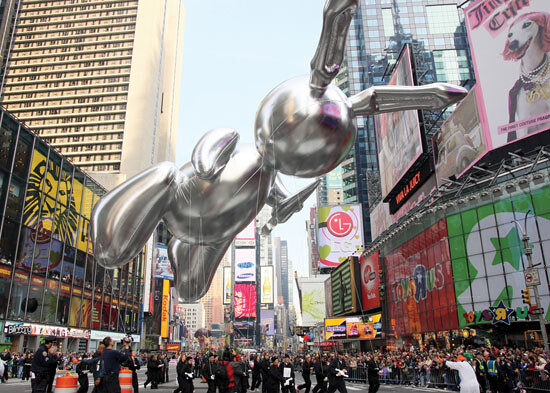

1. The Sensuous Shining of the Commodity
The collapse of subjectivity into objecthood reached new heights in the Commodity art of the 1980s and early 1990s. It is not by accident that much of this art focused on polished, shiny objects, often in stainless steel, aluminum, or other metals. One can think of any number of objects on Haim Steinbach’s shelves, or Sherrie Levine’s 1991 bronze version of Duchamp’s Fountain—which was anticipated in a much more explicitly critical mode by Hans Haacke’s Baudrichard’s Ecstasy in 1988. However, it was Koons’s Rabbit (1986) that stands for the apotheosis of the polished and reflecting (though barely reflexive) commodity in the art of that period.
In a combination of established and nascent artistic positions that was only (albeit barely) credible at this precise historical moment, the 1986 New Museum exhibition “Damaged Goods” contained works by Koons and Steinbach as well as by Louise Lawler, Ken Lum, and Andrea Fraser, who did her first gallery talk as Jane Castleton in this context—the context in which Koons exhibited some of his The New vacuum cleaners and enlarged alcohol ads. In the “Damaged Goods” catalogue, Hal Foster sounded a critical note about the “cute-commodity art” of Koons and Steinbach, whereas Brian Wallis attempted to tie the disparate practices together by arguing that they all
seek to operate at the core of the economic system, to signal its weakness through sly complicity. These works may legitimately be called “damaged goods” for, while on the surface they appear to valorize the brilliance and perfection of new consumer objects, they harbour an ambivalence, one which inserts doubt, introduces humor and absurd overproduction, dramatizes display, and provokes questions.7
Wallis’s reference to the “brilliance and perfection” of consumer goods is immediately evocative of the mid-1980s’ investment in the fetishism of the code as manifested in patently material yet shiny and almost unreal objects. Koons’s work, from The New to Rabbit, is undeniably the locus classicus in this respect. In the New York art world of the period, Koons’s work was read with Baudrillard in mind, as Foster’s essay shows.8 The sheen of works such as The New and Rabbit stands in the service of the fetishism of the signifier and the “codification” of the commodity: it becomes a patently physical yet oddly dematerialized apparition, engaging in phantasmatic relations with its kind. The posters of basketball stars in Koons’s Equilibrium show and the enlarged ad of an aspirational black couple sipping Hennessy in Luxury and Degradation are the ethnically coded counterparts of the vacuum cleaners and bunnies, the sheen of the skin transmuting problematic subjects into signs of muscular prowess and consumption.
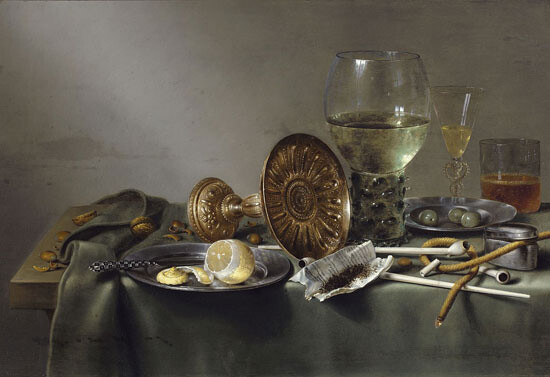

“Shine” is etymologically related to the German noun Schein (its near-homophone) and the verb scheinen. Both noun and verb are key notions in modern aesthetic theory. English translators of authors such as Nietzsche and Adorno habitually struggle with Schein, often going for “semblance” or “appearance.” Hegel famously defined the beautiful as “das sinnliche Scheinen der Idee”—the sensuous appearance or “shining” of the idea.9
In historicizing art, Hegel was concerned with differentiating between various epochs in which art was able to achieve this sensuous manifestation of the ideal to a greater or lesser extent. In the “symbolic” art of Ancient Egypt, form remained mute and random, incapable of truly expressing its content; in Classical Greece, form and content were in harmony, but this equilibrium was fragile and was finally shattered when Christianity introduced a spiritualized conception of the world that could never be fully made sensate. While it was true that the abstract God of the Israelites incarnated in the material and visible form of Jesus, this was not the synthesis of the ideal and the real that the Greek gods represented. Rather, the tripartite Christian God (Father, Son, Holy Spirit) was marked by a radical disjunction between the “idea” and the “sinnliches Scheinen.”
Art could latch onto the latter, and often did so brilliantly. As Hegel put it in a passage in which he (the Prussian Protestant) both snubs the Catholic host and extolls the autonomization of art in the sixteenth century:
It is one thing for the mind to have before it a mere thing – such as the host per se, a piece of stone or wood, or a wretched daub; – quite another thing for it to contemplate a painting, rich in thought and sentiment, or a beautiful work of sculpture, in looking at which, soul holds converse with soul and Spirit with Spirit. In the former case, spirit is torn from its proper element, bound down to something utterly alien to it – the sensuous, the non-spiritual. In the latter, by contrast, the sensuous object is a beautiful one, its spiritual form giving it a soul and containing truth in itself.10
Renaissance and Reformation both have their share in this emancipation of art, Hegel suggests, and ultimately the Renaissance is at odds with Catholicism just as much as the Reformation: Raphael’s Madonnas received fewer offerings than third-rate kitsch paintings.11 For Hegel, with Luther the Catholic Church became truly obsolete, as it remained enmired in superstitious attachment to form and matter (“the fettering of the mind to a sensuous object, a mere thing”).12 It is Lutheran Protestantism that can realize Spirit as subjective freedom, untrammelled by external form. This would be a boon to philosophy and science. In the process, of course, “autonomous” art itself slides into irrelevance as far as the development of Spirit was concerned—no matter how beautiful and gratifying its Schein.
Hegel’s philosophical aesthetics may seem far removed from any discussion of recent art, be it from the 1980s or from 2014. However, Hegel articulated fundamental aesthetic problems that are still with us. Or rather: we are still within them; we inhabit them. As Marc Shell has noted, some of the most influential proponents of philosophical aesthetics in Germany, including Hegel, were profoundly marked by economic theorists such as James Stuart and Adam Smith: “Monetary theory ties together symbol and commodity, as well as universal and particular, in a knotty conception of the relationship between thought and matter.”13 In his Philosophy of Right, Hegel analyzed paper money in terms of a dialectic of symbol and commodity. Thus even before Marx, who would politicize fundamental tropes of idealist aesthetic theory, German idealism thought the economic in aesthetic terms, not by “aestheticizing the economical” but by analyzing the dialectic of idea and matter, of sign and substance, of invisibility and appearance.
It is hardly a surprise that the notion of Schein would play a crucial role in the work of the twentieth-century Marxist whose work represents the most thorough theorization of the commodity-status of the modern artwork. Adorno defended aesthetic Schein against attacks on art as being nothing but wasteful expenditure and conspicuous consumption; in response to Thorstein Veblen’s “attack on culture,” Adorno argued that “Schein is dialectical as a reflection (Widerschein) of truth; to reject all Schein is to become its victim all the more fully.”14 But what, in modern art, is “truth”? Adorno of course resolutely rejected the Hegelian version of the dialectic of idea and appearance, with its Platonic overtones. His truth is social, embodied—the truth of subject and object in industrial capitalism, in which both are subject to abstraction and commodification.
Adorno states that in modern art, “the absolute artwork meets the absolute commodity.”15 As art becomes increasingly “autonomous,” it paradoxically comes to resemble the commodity and its “theological whims” all the more. As Stewart Martin argues,
Two forms of illusion are condensed in Marx’s account [of the commodity fetish], the distinction of which is decisive for Adorno’s account. One is the attempt to read value out of the sensuous qualities of commodities. This is an illusion of the commodity’s sensuousness. The illusion is “seen through” by knowing that value is not sensuous, but abstract, a quantum of abstract labour time. But seeing through it does not dissolve it, since it is generated by the social relations of private labour. The other illusion, which is both the cause and the result of the first, is an inversion of subject and object. This is an illusion of the autonomy of the value-form, of the nascent attempt of capital to realize itself, as self-valorizing value, independent of its constitution by living labour. It is an illusion that is seen through by knowing that capital is dependent on labour, but this does not dissolve it; that requires an end to private (wage) labour.16
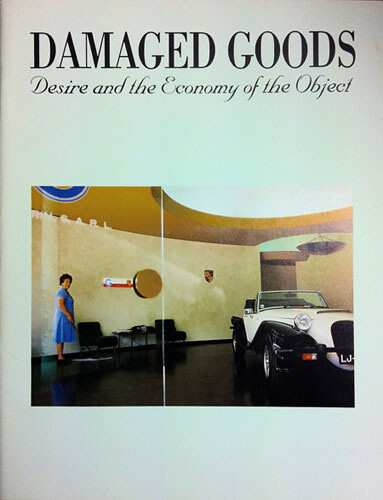

In Martin’s reading of Adorno’s aesthetics, Adorno sides with the illusion of sensuous presence over the illusion of the autonomy of value. “The autonomous artwork is an emphatically fetishized commodity, which is to say that it is a sensuous fixation of abstraction, of the value-form, and not immediately abstract.”17 Here we get back to the matter of Schein, and of shine. Whereas in his philosophy Adorno argues in favor of the “primacy of the object,” in his aesthetic writings he stresses the need for the artwork—an object to begin with—to demonstrate a subjective mastery of the medium, of the material. For Adorno, one fundamental aesthetic problem with film was precisely its objectivism, its dependence on photographic realism.18 But “sensuous fixation” on a commodity also means that the artistic commodity is highly subjectivized even when its pushes the mimesis to the entfremdete Dinge to the point of the ready-made and appropriation. It was precisely in 1980s commodity art that this development—the subjectivation of the object—reached its apogee in shine. To be attentive to the labors of shine would be to take Adorno’s privileging of the pseudo-concrete fetish one step further.
Barbara Bloom’s photograph on the cover of the “Damaged Goods” catalogue could be seen as a critical gloss on the Baudrillard-appropriating commodity art (discourse) of the period. Bloom’s photo Lisbon, 1985 depicts a car showroom, or perhaps the lobby of a car importer; we look through and past a glass door at a curved wall sporting a small Porsche logo. Against the wall is a small table and two chairs, and to the right is a classic black-and-white sports car, perfectly polished and shiny. To the left, next to one of the chairs, is a middle-aged cleaning woman mopping the floor, or pausing from mopping the floor—apparently noting the camera, and in any case not behaving like well-behaved worker à la Fried or Wall, completely absorbed by her task.19 She introduces the labor of shine into the publication; the activity of shining, of producing the gleam of the alluring commodity fetish. If the Mulveyan reduction of actresses and models to seamless fetish-images is perhaps the classic instance of the production of shine, here the implication of feminine, reproductive labor in the production of shine is foregrounded. It is this labor that makes the phallic car, and the floor on which it stands, really shine; that make the car and its environment look as physical manifestations of platonic ideas.


2. The Multiple Grail
In his early essay on Wagner, written during the Nazi period, Adorno characterized Wagner’s music theatre as “phantasmagoric” precisely because of its basis in commodity fetishism. In trying to create a seamless illusion and a dream-like atmosphere, Wagner prefigured later, more technologically advanced manifestations of the culture industry, while his tableaux on stage recalled contemporaneous displays of consumer goods. In the phantasmagoria, “wird der ästhetische Schein vom Charakter der Ware ergriffen.”20 Wagner’s operas are dependent on the concealment of labor, a prerequisite of commodity fetishism:
Richard Wagner’s formal law is the concealment of production through the appearance (Erscheinung) of the product. The product present itself as self-producing: hence the primacy of the leading note and chromaticism. By no longer allowing any glimpse of the forces and conditions that produced it, the Schein of aesthetic appearance lays claim to the status of Sein (being).21
The Wagnerian scene becomes a series of tableaus akin to displays at world’s fairs or department stores:
In Wagner’s day, goods on display were reduced to seductively showing their phenomenal side to the mass of consumers, while diverting attention from this merely phenomenal character—from the fact that they were beyond reach. Similarly, insofar as they are phantasmorias Wagner’s operas tend to become commodities. Their tableaux assume the character of wares on display (Ausstellungscharakter).22
And is the grail not the ultimate phantasmagorical commodity? In Adorno’s musicological analysis of Lohengrin’s passage, he notes that “in that it gives solace, the phantasmagoria is that of the grail itself [als Trost spendende ist die Phantasmagorie die des Grals selber].”23 In fact, one of Wagner’s most blatantly phantasmagoric tableaus—though neglected by Adorno, who focuses on the brothel-like scenes of the Venusgrotte and Klingsor’s garden—is the central hall of the grail castle, in which the grail magically lights up. In both the first and the second act of Parsifal, the audience witnesses the Grail ritual, in which the miraculous object reveals its life-giving powers. Wagner’s stage directions state that the Grail exudes a purple glow, and in the final Grail scene at the end of the Third Act, when Parsifal has taken over as Grail keeper, a white dove descends towards the Grail. Wagner’s use of lighting effects was highly advanced: electric lighting gave the Grail a technological halo. The staging is reminiscent of the display of luxury goods in advertisements.
It should come as no surprise that Wagner, steeped in the romantic socialism of the 1940s, latched onto the motif of the Gral, which had been placed on the cultural agenda by the Romantics of the early nineteenth century, and which conveniently concatenated the mystical and the material, the spiritual and the economic.24 The medieval legends use the Christian Eucharist as the Grail’s de facto model: like the host, the Grail is not what it seems.25 It is an object, but on closer inspection it is a miraculous subject-object. It has an agency not found among ordinary bric-a-brac. As Marc Shell puts it, “The tales present the Grail as being a thing both of this world and not of this world, or as being a thing both homogenous and heterogenous with all things.”26 Shell argues that the motif of the Grail blends the eucharistic and the monetary: the theological and economic were closely intertwined. As Shell stresses, the earliest Grail authors lived in trading centers that were marked by the presence of Jewish traders and the Knights Templar—a crusading order cum banking empire.27 This period saw once solid things melt into thin air, with an impoverished nobility being confronted with a rising merchant class and new forms of credit. It may be overly literal to present the Grail as “a literary species of the blank check, the Arabic sakh, introduced to Europe by Jewish merchants before the fall of Jerusalem to the Crusaders in 1099,” but the larger point is no less crucial for that.28 The Grail was always an economico-theological trope, becoming an economico-aesthetic one in modern culture. Its mythic Schein was always already a shine in waiting.
It is highly telling that in 1848, just before his participation in the Dresden Revolution, Wagner wrote an essay titled Die Wibelungen, which is a fanciful reading of medieval and post-medieval history. Its focus is on the Frankish kings and emperors, alias the Ghibelins or the Wibelungen—whose history Wagner thought had been mythologized in the Nibelungenlied. Later, Wagner would of course retcon that same Nibelungenlied by (re)introducing elements from Nordic mythology, resulting in the contract-obsessed Ring des Nibelungen. Already in Die Wibelungen, Wagner reads the Nibelungenlied as a repository of mythemes, focusing on the Medieval Kingdom as an afterlife of the Germanic Urkönigsthum and on the fictional Nibelungenhort (the Nibelung treasure) as a symbol of quasi-divine royal power. Friedrich Barbarossa, the crusader-emperor who in the nineteenth century was a mainstay of German nationalist mythmaking, was the last Kaiser to come close to realizing this ideal. Wagner avers that the legend of the Holy Grail appears as a kind of ideal substitute for the Nibelungen Hoard at the moment when the Kaiserthum lost its purchase on reality.29
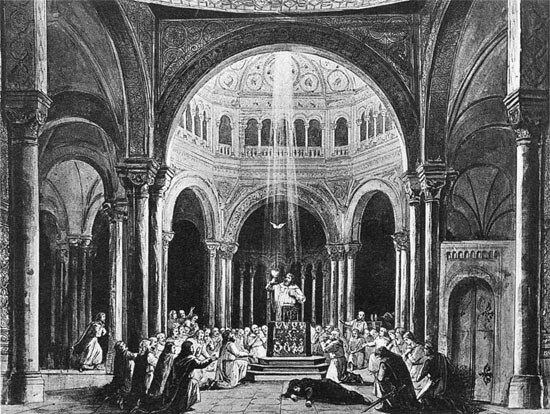

However, the Grail as an “ideal” offshoot of the Nibelungen Hoard had its counterpart in real, actual property: “The Hoard of the Nibelungen had evaporated to the realm of Poetry and the Idea; merely an earthly precipitate remained as its dregs: real property.”30 Under feudalism, property was in fact a loan from the king; now, with the first stirrings of capitalism in Northern Italy, where the foundation for the secularized post-Templar banking system was laid, property became transferrable and inheritable. Thus the Nibelungenlied ultimately leads Wagner to his reactionary-romantic-socialist critique of capitalism, which would take the form of the “contractual obligation” motif in Der Ring des Nibelungen.
Wagner’s works, particularly the appearances of the Nibelungenhort in Der Ring and of the Grail in Parsifal, are crucial concatenations of aesthetic schein and commodified shine. In late-nineteenth-century productions of Parsifal, the Grail’s appearance oscillated between that of a simple, bare cup and that of a more ornate vessel. Lit up electrically, by the latest technological magic available, this physical grail advertised its otherworldliness—saving it from becoming an arbitrary object. But for all its industrial light and magic, Wagner’s Parsifal Grail is a first step towards a physical literalization of the grail. Throughout modern culture the grail is both present and absent, an unstable symbol that at times becomes a physical object, while at other times retreating into a purely spiritual existence.
In the Middle Ages and early modern period, the Grail had been a purely literary symbol. For all its theological underpinnings, it had and still has no status in traditional Christianity. “The Holy Grail” simply does not exist in Catholic or Protestant Christianity, as concept or as object. From the early twentieth century onwards there have been repeated attempts to identify “the Holy Grail” with some concrete vessel. One of the most famous of such Grails—the Antioch Chalice—is housed in the Metropolitan Museum, and earlier this year police raided a pub in Wales believed to be the location of another potential “Holy Grail” that had been stolen.31 Monty Python drew the logical conclusion from this materialist grail by having an early draft of their Holy Grail screenplay end at Harrods: if Harrods has everything, the Holy Grail can surely be found at this temple of conspicuous consumption.32 The objects of commodity art are so many real-life versions of this Pythonesque department store Grail.
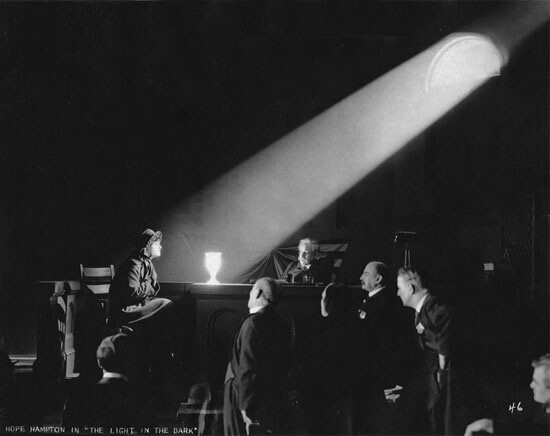

Monty Python’s film is of course also an example of a further iteration of the multiple Grail object: the cinematic grail. Wagner’s grail, with its industrial light and magic, is already proto-cinematic in nature. If film is, or was, photographically bound to the physical and visible world, then the Grail could be a perfect vehicle for introducing a gleam of transcendence into the mundane; a quasi-religious glamour. The Grail proved to be a highly cinematic subject-object, starting with Lon Chaney’s The Light in the Dark from 1922 (the same year as Eliot’s The Waste Land, which of course takes its imagery from the Grail Romances), in which a thief attempts to save a woman’s life by stealing a cup believed to be the Holy Grail (“the phantom cup of Lord Tennysson’s poem”) to cure her. Later efforts range from Excalibur to The Fisher King and Indiana Jones and the Last Crusade. In contrast to Hitchcockian McGuffins, which are exchangeable and mere excuses for an action to take place, the Grail is a cinematic actor laden with a vague but insistent promise of redemptive meaning. The avant-garde valorization of the object in films from Man Ray and Hans Richter to Eisenstein and Vertov can be seen as a desublimation of the cinematic Grail that began in 1922, its replacement by objects whose agency does not follow a pseudo-eucharistic plot.


The cinematic Grail is somewhat uncomfortable as a special effect oscillating between symbol and matter, between Schein and shine. Largely doing away with the Grail’s material side, late-nineteenth- and early-twentieth-century authors such as Joséphin Péladan, Arthur Edward Waite, Jessie Weston (a source for Eliot), René Guénon, Otto Rahn, and Joseph Campbell latched onto the grail’s nondescript meaningfulness by re-spiritualizing and psychologizing the Grail in order to counter capitalist “materialism.”33 This movement continued apace in the later twentieth and early twenty-first century, with the grail at times taking on pseudo-feminist overtones, becoming identified with Mary Magdalene and some New Age “eternal feminine.”34 Wagner’s Grail cup, which was the exclusive property of pure male knights who managed to resist temptation, was a fetishized counter-feminity in opposition to the sexual threat of Kundry; now a marginally different and seemingly progressive gender essentialism has replaced it.
The Grail succeeds as a commodity precisely insofar as it is a void, an empty but infinitely suggestive signifier that can be interpreted in numerous ways. But what does the esoteric and New Age “dematerialization” of the Grail—which, again, is a privileged object for the discussion of Schein and shine—mean for the production of shine? If the grail—i.e., value –is to be located in us, then which consequences does this have for contemporary shine? In the politico-aesthetic economy of the Grail, its increasing symbolization and occultation suggest that once again, all that it solid is in the process of melting into thin air.
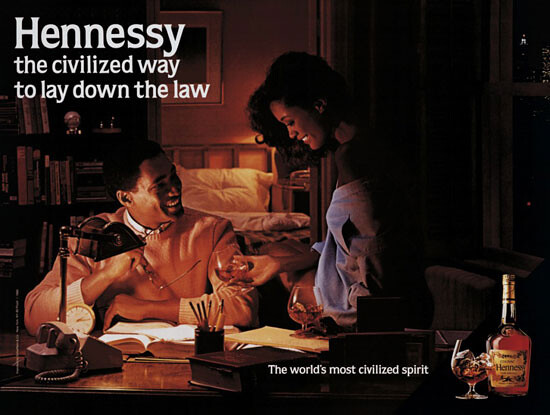

3. Post-Visual Shine
In today’s algorithmic cultural economy, as Jonathan Crary put it, “to be preoccupied with the aesthetic properties of digital imagery … is to evade the subordination of the image to a broad field of non-visual operations and requirements.”35 Is shine, then, now doubly superficial? Of course, the commodity fetish and its shine is always partly the result of nonvisual operations. This, after all, was the point of the “demystification” of the commodity fetish and the spectacle, and of Adorno’s critique of Wagner. Is it not just as applicable to Apple and its shiny products, and their production in China? We could apply this kind of Marxian analysis just as well to the black athletes in Koons’s Equilibrium ads or to the shine sold to Tiqqun’s “Young-Girl” by lifestyle magazines.36
So what, if anything, has changed? The technological intensification of opacity has made the jump from merely quantitative to qualitative. Production of phones in China is one thing; algorithmic high-frequency trading impacting not only the value of companies but the fate of whole nations is another. Now that our political techno-economy is producing invisibilities to such an extent that we might polemically state that we inhabit a post-visual culture, images are no longer even fetishistic disavowals of productive relations but rather means of production among others. Are films still made to be watched, or to watch us? Are products not already a kind of reconnaissance drones, smart Spimes (to use Bruce Sterling’s term) that cannot only be tracked across networks, but that also track us in return, accruing information on their users?37 What we need is not a neoscholastic ontology but a form of psycho materialism that acknowledges that the always instable and nonlinear dialectic of subject and object is now one of subject, object, and algorithm.38
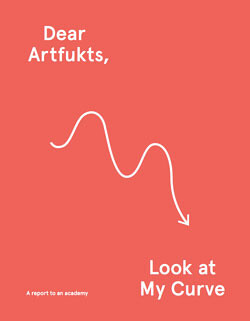

Cover of Natascha Sadr Haghighian’s essay “Dear Artfukts, Look at my Curve: A Report to an Academy”
The subject’s shiny self-presentation aside; What about the diffused, scattered shining of likes, followers, Google analytics, and page views? What we need are new, counterintuitive concepts. What about dark shine, in analogy to dark matter? Is dark shine not what characterizes the world of server centers and of screens that could increasingly just as well go black, as the programs are increasingly autonomous agents making split-second decisions beyond human intervention?39 Are we not already taken over by our own algorithmic doppelgangers, as Natascha Sadr Haghighian suggests in her essay “Dear Artfukts,” in which she grapples with her descending curve on Artfacts.net?40 Meanwhile, the system’s engine is fuelled by a more literal kind of dark shine: our economy radiates with nuclear energy.
In a postvisual culture, the old strategy of revealing the hidden abodes of production, or revealing the production of shine, is insufficient. Shine is now a black box, and revealing its workings can—to the extent that it is possible—certainly be important, but it is ultimately more crucial to repurpose and reprogram it. Alexander Galloway has argued that in the age of “opaque technological [devices] for which only the inputs and outputs are known,” we must invert the Marxian call to “descend into the hidden abode of production” (thus presumably demystifing the commodity): what matters today is no longer “illuminating the black box by decoding it,” but rather “functionalizing the black box by programming it.”41 When Sadr Hahgighian creates alternate biographies with her Bioswop website or engages with her drooping career graph on Artfacts.net, these are modes of engaging with the invisible grail—with the dark shine—of autoproductivity and autocontrol, with life as data provider and algorithmic feedback loop.
Bruno Latour, We Have Never Been Modern, trans. Catherine Porter (Cambridge, MA: Harvard Univ. Press, 1993).
Graham Harman, The Quadruple Object (Winchester/Washington: Zero Books, 2011), 19.
The term was introduced by Quentin Meillassoux; see Harman’s discussion in The Quadruple Object, 136–137.
Melanie Gilligan and Marina Vishmidt, “Economic Subjectivities in Crisis,” in And Materials and Money and Crisis (Vienna/Cologne: MUMOK/Walther König, 2013), 98, 101.
Ibid., 98.
Ibid.
Hal Foster, “(Dis)Agreeable Objects” and Brian Wallis, “A Product You Could Kill For,” in Damaged Goods: Desire and the Economy of the Object (New York: New Museum of Contemporary Art, 1986), 17, 34.
Foster’s most extensive discussion of Baudrillard is however relegated to a footnote—note 15.
G. W. F. Hegel, Vorlesungen über die Ästhetik I. Werke 13 (Frankfurt am Main: Suhrkamp, 1970), 151.
English translation adapted from →. The original in German reads: “Es ist etwas ganz anderes, wenn der Geist ein blosses Ding, wie die Hostie als solche, oder irgendeinen Stein, Holz, ein schlechtes Bild vor sich hat oder ein geistvolles Gemälde, ein schönes Werk der Skulptur, wo sich Seele zu Seele und Geist zu Geist verhält. Dort ist der Geist ausser sich, gebunden an ein ihm schlechthin Anderes, welches das Sinnliche, Ungeistliche ist. Hier aber ist das Sinnliche ein Schönes und die Geistige Form das in ihm Beseelende und ein in sich selbst Wahres.” G. W. F. Hegel, Vorlesungen über die Philosophie der Geschichte. Werke 12 (Frankfurt am Main: Suhrkamp, 1970), 488-489.
Ibid., 489.
“Gebundensein an ein Sinnliches, an ein gemeines Ding.” Ibid., 493. English translation adapted from →.
Marc Shell, Money, Language, and Thought (Baltimore: Johns Hopkins Univ. Press, 1982), 151.
“Schein ist dialektisch als Widerschein der Wahrheit; was keinen Schein gelten lässt, wird erst recht dessen Opfer.” Theodor W. Adorno, “Veblens Angriff auf die Kultur,” in Kulturkritik und Gesellschaft I. Gesammelte Schriften 10.I, ed. Rolf Tiedemann (Frankfurt am Main: Suhrkamp, 1977), 84. Author’s translation.
“[D]as absolute Kunstwerk trifft sich mit der absoluten Ware.” Theodor W. Adorno, Ästhetische Theorie (Suhrkamp: Frankfurt am main, 1970), 39. I agree with Martin that translations of this passage that use verbs such as “merging” and “converging” are inadequate. Stewart Martin, “The Absolute Artwork Meets the Absolute Commodity,” Radical Philosophy 146 (Nov.–Dec. 2007): 24 (note 18).
Martin, ibid., 23.
Ibid., 19.
See for instance the essays “Im Jeu de Paume gekritzelt” (on impressionism) and “Filmtransparente” (1966) in Kulturkritik und Gesellschaft I, 321-325, 353-361.
Jeff Wall’s 1999 photograph of Mies van der Rohe’s Barcelona Pavilion, Morning Cleaning, in which the cleaner is male, reads like an interiorized, Friedean version of Bloom’s image.
Theodor W. Adorno, Versuch über Wagner in Die musikalischen Monographien. Gesammelte Schriften 13, ed. Rolf Tiedemann (Frankfurt am Main: Suhrkamp, 1971), 86.
“Die Verdeckung der Produktion durch die Erscheinung des Produkts ist das Formgesetzt Richard Wagners. Das Produkt präsentiert sich als selbst Produzierendes: daher auch der Primat von Leitton und Chroma. Indem die ästhetische Erscheinung keinen Blick mehr durchlässt auf Kräfte und Bedingungen ihres realen Produziertseins, erhebt ihr Schein als lückenloser den Anspruch des Seins.” Ibid., 82. Translation adapted by the author from Rodney Livingstone’s English translation.
“Wie die ausgestellten Konsumgüter von Wagners Epoche den Käufermassen einzig noch ihre phänomenale Seite Seite verlockend zukehren und damit ihren bloss phänomenalen Charakter, nämlich ihre Unterreichbarkeit, vergessen machen, so tendieren die Wagnerschen Opern in der Phantasmagorie zur Ware. Ihre Tableaux nehmen Ausstellungscharakter an.” Ibid., 86.
Ibid., 83.
The Grail figured, of course, in the Arthurian Revival that was such a key characteristic of English Romanticism, for instance in Tennyson’s work. In Germany, it was analyzed earnestly as an aesthetico-religious symbol in the context of Romantic and Idealist mythology by authors such as Joseph von Görres, the introduction to whose 1813 Lohengrin was read by Wagner. Note that in this section of the present text, I reuse some elements from my earlier essay “Grail for Sale,” HTV no. 66 (Nov.–Dec.2006): 7–13.
See Richard Barber, The Holy Grail: Imagination and Belief (Cambridge, MA: Harvard Univ. Press, 2004).
Shell, Money, Language, and Thought, 41.
Ibid., 42.
Ibid., 44.
Richard Wagner, The Wibelungen (1848), trans. William Ashton Ellis →. On Die Wibelungen, see also Shell, Money, Language, and Thought, 36–39.
Wagner, The Wibelungen.
See →.
Bob McCabe, Dark Knights and Holy Fools: The Art and Films of Terry Gilliam (London: Orion, 1999), 48.
Joséphin Péladan, Le Secret des troubadours: De Parsifal à Don Quichotte (Paris: Sansot, 1906); Arthur Edward Waite, The Hidden Church of the Holy Graal: Its Legends and Symbolism, Considered in their Affinity with Certain Mysteries of Initiation and other Traces of a Secret Tradition in Christian Times (London: Rebman, 1909); Jessie L. Weston, From Ritual to Romance (Cambridge: Cambridge Univ. Press, 1920); René Guénon, Le Roi du monde (Paris: Charles Bosse, 1927); Otto Rahn, Kreuzzug gegen den Gral. Die Tragödie des Katharismus (Freiburg im Breisgau: Urban, 1933).
The identification of the Grail with the “bloodline” of Jesus and Mary Magdalene in Michael Baigent, Richard Leigh, and Henry Lincoln’s The Holy Blood and the Holy Grail (London: Jonathan Cape, 1982) was taken into a quasi-feminist New Age direction by Margaret Starbird in The Woman with the Alabaster Jar (Rochester: Bear & Company, 1993), which was reiterated in Dan Brown’s bestselling potboiler The Da Vinci Code (New York: Doubleday, 2003).
Jonathan Crary, 24/7: Late Capitalism and the Ends of Sleep (London: Verso, 2013), 47.
Tiqqun, Preliminary Materials for a Theory of the Young-Girl, trans. Ariana Reines (New York: Semiotexte, 2012).
Bruce Sterling, Shaping Things (Cambridge, MA: MIT Press, 2005).
“Psycho Materialism” is the title of a symposium organized by Kerstin Stakemeier and Tim Voss in Worpswede.
See Brian Holmes, “Information’s Metropolis: Chicago and the New Nature of Finance,” and especially Karin Knorr Cetina, “What if the Screens Went Black? The Coming of Software Agents,” both in Beate Geissler and Oliver Sann, Volatile Smile (Nürnberg: Verlag für moderne Kunst, 2014), 28–53, 112–127.
Natascha Sadr Haghighian, “Dear Artfukts, Look at My Curve: A Report to an Academy,” in 9 Artists (Minneapolis: Walker Art Center, 2013), 4–19.
Alexander R. Galloway, “Black Box, Black Bloc,” in Communization and Its Discontents: Contestation, Critique, and Contemporary Struggle, ed. Benjamin Noys (Wivenhoe: Minor Compositions, 2011), 239, 244.